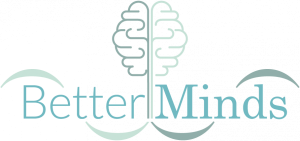As a practitioner, understanding the way body language signs give away tiny changes in our daily mindsets, emotions and interactions can make all the difference when it comes to building rapport with our clients.
In our day to day lives, we form micro-habits and body language signs that have a huge impact, and yet require little effort alone. In The Power of Habit, Charles Duhigg discusses how habits can be formed and how they can be integrated into our lives to make us operate in the best ways we want to.
When you willfully look at the world and see what works and what doesn’t work, the habits you make let you change the things you can impact on within your personal sphere. Even the meal deal you choose every lunchtime is not often subject to change: you make the choice based on what you know already works, and whether you can afford to try something new that day. A sturdy routine negates the need to make decisions, meaning you’re left with more time to navigate your world largely decision-free. All this feeds into the way our body language signs change, giving the game away when one of the emotions we’re feeling overpowers the rest. But micro habits are things you can easily adopt and use to change how you operate, whereas body language signs are a set of automatic behaviours that convey clear messages that can teach us all about those we are observing, and equip us to know how best to support them even if they tell us that they are fine.
The Case of All Bar One
 If you’re part of the same generation as I am, you’ll have grown up knowing a time when you couldn’t see into pubs and bars when you walked down the street. When the laws changed to allow pubs to have clear windows, All Bar One created the first female friendly bars in the UK, with floor to ceiling windows, wide tables, spacious settings and a non threatening environment. These windows and lightened environment meant other women could look in from the outside, make a judgement on the body language signs they saw, and see whether it was okay to go in before they went in; without being aware of it, it allowed women to look into pubs observe the body language of the clientele and decide whether to wait outside or to enter and feel comfortable to be solitary customer, it changed the game for single women occupying what was a male dominated space. Now the floor to ceiling glass venues are the norm so we can all read body language signs before we enter pubs.
If you’re part of the same generation as I am, you’ll have grown up knowing a time when you couldn’t see into pubs and bars when you walked down the street. When the laws changed to allow pubs to have clear windows, All Bar One created the first female friendly bars in the UK, with floor to ceiling windows, wide tables, spacious settings and a non threatening environment. These windows and lightened environment meant other women could look in from the outside, make a judgement on the body language signs they saw, and see whether it was okay to go in before they went in; without being aware of it, it allowed women to look into pubs observe the body language of the clientele and decide whether to wait outside or to enter and feel comfortable to be solitary customer, it changed the game for single women occupying what was a male dominated space. Now the floor to ceiling glass venues are the norm so we can all read body language signs before we enter pubs.
The kind of body language signs seen especially in pubs and bars and social spaces allows us to observe ‘matching and mirroring’. People-watching is one of those things where you use your instincts to judge the way to interact based on the body language signals of others; usually without even realising.
When we feel connected to someone, we naturally copy body language signs. When we are comfortable with someone we copy or reflect what the other person’s postures and we build trust without even realising we’re doing so. This is what makes people watching such an interesting pastime; we intuitively recognise the signs and signals we use everyday in others.
Body Language Signs in Therapy
As well as becoming attuned to the body language signs we use in our everyday lives, we can use body language to change the atmosphere for our clients in recovery too. Generating trust through rapport building is the cornerstone of any professional relationship. When you’re working with clients, building that feeling of comfort and safety makes two feelings possible; they’ll like what you’re doing, and they’ll know that you know what you’re doing.
We do this by Pacing and Leading – we adopt patterns that are similar to those of our service users. Ultimately, the most intuitive body language signs help your clients feel that you speak their language, that your environment works for them too.
Using Body Language to Create a Foundation for Change
1: Start by pacing (modelling what they do).
2: Use the same posture.
3: Move at the same pace of movement.
4: Nod when they nod stay still when they are still.
5: Adopt the same language as them so if they use local idioms, you should use them – as long as it is authentic.
6: Match and mirror: this is where you sit in the same way as them. You should only move to copy their posture when you are then one who is talking. To do this well, plan how you want to be positioned so that it matches theirs and then animate as you talk and as you settle into the new position gesture in some way that you want them to speak now.
Body Language Signs to Avoid
1: Avoid poor eye contact – people typically look away just as they are being deceitful.
2: Avoid intense gazing – it is threatening. Instead refer to your notes or adopt a wistful gaze over their shoulder as your formulate a question.
3: Avoid a fixed expression – smile to help lubricate the wheels of change.
4: Avoid covering your mouth or touching your neck when you are talking. It signifies deceit.
5: Avoid fidgeting with an object – it signifies a lack of interest or boredom with the person you are talking to. If you are a pen clicker and want to make your session go better, use a biro!
6: Avoid closed body language signs: an oldie but a goodie. Adopt an open posture and avoid crossed arms and legs. It’s ok if not critical to adopt this posture at the start of working with someone if you are matching them, but remember once you have built a connection, adopt an open one and watch as they copy you. As they copy your body language signs, this will demonstrate that you have built a foundation of rapport.
The most successful therapy is delivered with genuine rapport. From body language signs to the science behind the labels, our vast range of tools and techniques helps your team engage your clients for the most positive results. Get in touch to ensure Betterminds for you, your team and your clients.

